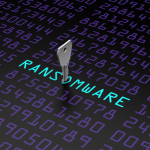It has never been more important to stay vigilant and adaptable in the face of ongoing change. With so many employees now working remotely, it’s important to ensure that networks and devices are secure and that employees are trained to recognise and avoid potential cybersecurity threats. This includes things like phishing attacks, malware, and other types of cyber threat. Businesses should also have protocols in place for responding to cybersecurity incidents and for recovering from a breach.
Staying up to date with changes in technology and considering how they can use it to their advantage is vital for businesses. This may involve using new tools and platforms, investing in training and development, or new business models. Keeping up with regulatory changes and ensuring that the organisation is following any relevant laws and policies is also key.
By being proactive and taking a practical approach to risk management, organisations can build resilience and position themselves for success in an increasingly complex and rapidly changing world
Supply Chain Security
Supply chain security is now, and will continue to be, a key concern for organisations in today’s connected world. Cyber attackers will target any vulnerable point of entry to try and gain access to systems and data. Ensuring the security of the supply chain involves several different measures, which we believe will see wider use:
- Performing thorough risk assessments to find potential vulnerabilities
- Implementing strict security controls and protocols throughout the supply chain
- Ensuring that suppliers and partners are complying with security standards and best practices
- Regularly monitoring and testing the supply chain to identify and address any weaknesses.
Securing the supply chain can be challenging, as it often involves a complex network of partners and suppliers. However, it’s a crucial part of a robust cybersecurity strategy moving into 2023. Organisations that prioritise supply chain security are better equipped to protect themselves and their customers from cyber threats.
Continued Evolution of Ransomware
It’s likely that we will see continued evolution of ransomware techniques not just in 2023, but in the coming years. One trend that has already emerged, and will continue to evolve, is the use of AI to make attacks more targeted and harder to detect. By using machine learning and other AI technologies, attackers can tailor their attacks to specific organisations or individuals.
To protect against these types of attacks, it’s like that organisations will need to stay up to date with the latest threats and implement measures that may include:
- Regularly updating and patching software and systems to fix vulnerabilities
- Introducing strong password policies and two-factor authentication
- Training employees to recognise and report suspicious emails and other potential threats
- Having a plan in place for responding to and recovering from a ransomware attack
A Rise in Deepfakes
Deepfake technology is rapidly evolving and as it becomes more refined, it will likely become tougher to detect. Deepfakes are digital manipulations that use AI to alter images, videos, and other media in a way that makes it appear as though someone said or did something that they did not. While this technology has the potential to be used for legitimate purposes, such as creating special effects in movies, it can also be used for malicious purposes. For example, they could be used to spread misinformation, or to impersonate someone for the purpose of scamming or defrauding others.
To protect against the potential risks posed by deepfake technology, it’s important for individuals and organisations to stay informed about the latest developments in this field. It’s also important to be cautious about believing or sharing content online without verifying its authenticity. Some tips for doing this include:
- Checking the source of the content: Is it from a reputable source, or is it from a suspicious or unknown website?
- Looking for signs of tampering: Are there any inconsistencies or anomalies in the content that might suggest it has been manipulated?
- Checking with other sources: Is the information being shared elsewhere, or is it only appearing in one place?
By following these and other best practices, individuals and organisations can help to protect themselves against the potential risks posed by deepfake technology.







